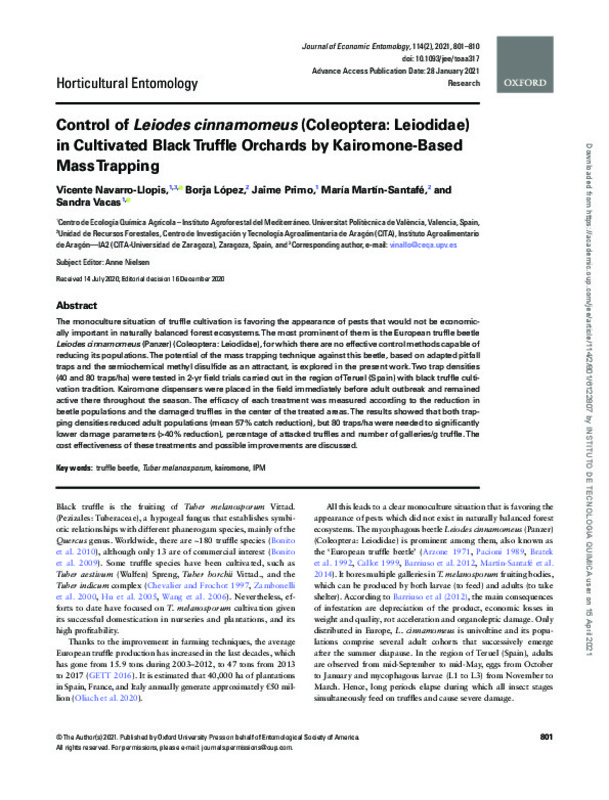JavaScript is disabled for your browser. Some features of this site may not work without it.
Buscar en RiuNet
Listar
Mi cuenta
Estadísticas
Ayuda RiuNet
Admin. UPV
Control of Leiodes cinnamomeus (Coleoptera: Leiodidae) in Cultivated Black Truffle Orchards by Kairomone-Based Mass Trapping
Mostrar el registro completo del ítem
Navarro-Llopis, V.; López, B.; Primo Millo, J.; Martín-Santafé, M.; Vacas, S. (2021). Control of Leiodes cinnamomeus (Coleoptera: Leiodidae) in Cultivated Black Truffle Orchards by Kairomone-Based Mass Trapping. Journal of Economic Entomology. 114(2):801-810. https://doi.org/10.1093/jee/toaa317
Por favor, use este identificador para citar o enlazar este ítem: http://hdl.handle.net/10251/181786
Ficheros en el ítem
Metadatos del ítem
| Título: | Control of Leiodes cinnamomeus (Coleoptera: Leiodidae) in Cultivated Black Truffle Orchards by Kairomone-Based Mass Trapping | |
| Autor: | López, Borja Martín-Santafé, María | |
| Entidad UPV: |
|
|
| Fecha difusión: |
|
|
| Resumen: |
[EN] The monoculture situation of truffle cultivation is favoring the appearance of pests that would not be economically important in naturally balanced forest ecosystems. The most prominent of them is the European truffle ...[+]
|
|
| Palabras clave: |
|
|
| Derechos de uso: | Reserva de todos los derechos | |
| Fuente: |
|
|
| DOI: |
|
|
| Editorial: |
|
|
| Versión del editor: | https://doi.org/10.1093/jee/toaa317 | |
| Agradecimientos: |
This work has been supported by the project `A2. Efectos de Leiodes sobre la produccion de trufa negra de Teruel: evaluacion de la incidencia y posibilidades de control' from Gobierno de Aragon (FITE 2016). We would like ...[+]
|
|
| Tipo: |
|









